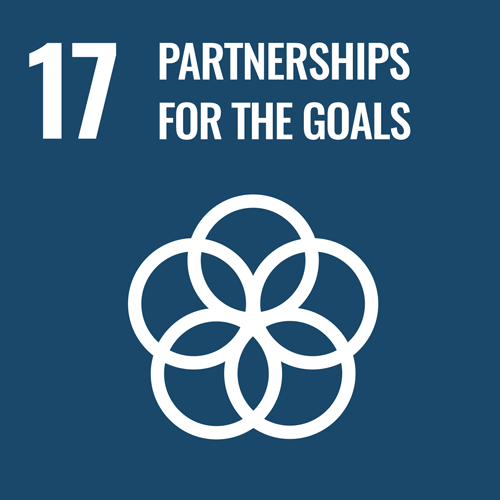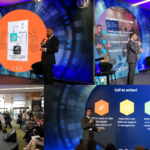By Celia Pizzuto
As technological advancements accelerate, the challenge remains to ensure these innovations reach those in need. At the 2024 AI for Good Global Summit, Jordan Robert, Senior Enterprise Account Manager at AWS, and Adam Marlatt, Operations Director at Help.NGO, shared their insights on harnessing AI to support humanitarian, development, and peacekeeping initiatives. Robert and Marlatt discussed how AI and other cutting-edge technologies are being integrated into field operations to enhance efficiency, safety, and resource management.
Transforming Humanitarian Aid with AI
Jordan Robert opened the session by highlighting the significant advancements in technology over the past decade. He emphasized the critical need to bridge the growing gap between available resources and those in dire need, particularly in regions affected by conflict and climate-induced emergencies.
“Technology advancement has been nothing short of amazing, but at the same time, the gap between those in need and the resources to help them has never been larger,” Robert stated.
Adam Marlatt continued the discussion by explaining Help.NGO’s role as a United Nations standby partner, deploying experts and AI-enabled technology to assist various UN agencies. He stressed the importance of integrating AI into operations to address the increasing demands on humanitarian missions amidst flatlining budgets. Robert pointed out that AI’s ability to maximize existing resources and avoid costly replacements is crucial in these contexts, allowing humanitarian partners to leverage big data for better decision-making and operational efficiency.
Practical Applications of AI in the Field
Robert and Marlatt shared specific use cases where AI has made a tangible impact. One such application involves automating time-consuming processes, such as the Daily ATC check-in process for security professionals, freeing up their time for more critical tasks. They also discussed the deployment of AI-assisted tools in Somalia, where they conducted “working backwards” sessions with local UN missions to identify and address specific challenges.
During these sessions, the team focused on several critical areas, including enhancing connectivity in remote locations, object detection using existing security cameras, and early warning systems through social media monitoring. Marlatt emphasized the importance of using open-source solutions to avoid dependency on proprietary software, particularly in regions with varying levels of digital literacy and complex procurement processes.
One notable project involved deploying hybrid edge devices, such as AWS’s Snowball Edge and Snowcone, to provide robust data processing capabilities even in connectivity-challenged environments.
“The reality is that there’s more than 2.75 billion people on the planet that don’t have access to Internet and this is often the same people that are disproportionately affected by humanitarian crisis and conflict,” Marlatt noted, explaining that this is a gap that AI and technological solutions can help bridge.
The use of satellite connectivity and hybrid systems like Snowball Edge allows for the continuation of critical operations even in the absence of stable internet connections. This hybrid approach is particularly vital in conflict zones or areas affected by natural disasters, where traditional communication infrastructure may be unreliable or non-existent.
Enhancing Situational Awareness and Communication
Marlatt elaborated on the integration of AI into communication systems, using tools like Wicker for secure messaging, which supports interaction with AI tools and data lakes. This setup allows for real-time updates and situational awareness, critical in high-risk areas. The team also leverages the Team Awareness Kit (TAK), an open-source platform that integrates various data sources, including static video cameras, drones, and IoT sensors, to provide a comprehensive operational picture.
Through these technologies, field teams can receive real-time alerts, such as potential roadblocks or security threats, and adjust their plans accordingly. For instance, if a drone detects an ad-hoc checkpoint or a flood, this information can be relayed instantly to convoy operators to reroute and avoid danger. The integration of live translation services using Amazon Translate, Transcribe, and Polly ensures that these updates are communicated effectively across different languages, crucial in multi-lingual operational settings. This capability is particularly valuable in regions where multiple languages and dialects are spoken.
Overcoming Challenges and Future Directions
While AI offers significant benefits, Robert and Marlatt acknowledged the complexities involved in implementing AI technologies in humanitarian contexts. The need for robust infrastructure, training, and ongoing support is critical to ensure the effective use of AI in field operations. He emphasized that AWS and Help.NGO work closely with partners, often taking on the responsibility of building and implementing solutions to help scale operations efficiently.
“We [provide] services to help you build whatever you want, but in some cases, you may not have the time or resources to build the solution,” Robert noted, underscoring the importance of partnerships in scaling AI solutions for humanitarian work.
This session demonstrated the transformative potential of AI in enhancing humanitarian and peacekeeping operations. By leveraging advanced technologies, AWS and Help.NGO are paving the way for more efficient and effective responses to global crises, ultimately bridging the gap between need and aid. As AI continues to evolve, its role in humanitarian and peacekeeping efforts is set to expand, offering new opportunities to improve the lives of millions worldwide.



















